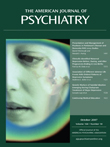“Welcome to a journey into the heart of our lives.” With these words, Daniel J. Siegel, scientist, psychiatrist, educator, and leader in the field of mental health, draws us into a rich and illuminating exploration of what it means to live in the here-and-now, to be fully present in the moment, to be “mindfully aware.” Daniel J. Siegel, M.D., is a graduate of Harvard Medical School and Director of the Mindsight Institute, Co-Director of the UCLA Mindful Awareness Research Center, and author of the internationally acclaimed, best-selling text The Developing Mind .
Dr. Siegel offers a rare opportunity to explore the world of “mindfulness” through his personal experience but also through the eyes of a researcher in child development and one who understands the workings of brain circuitry, which makes the reading in-depth as well as life changing. I found it difficult to put the book down and at the same time, the book has a plethora of depth in ideas and references that one could read the book several times and still not fully grasp its content. Though many of the concepts in the book will be quite familiar to those who practice mindfulness or work in the neurosciences, the ability to interweave mindfulness, basic neuroscience, and child development reframes the individual’s attention of all three areas in new and interesting ways.
The book is divided into four sections: Mind, Brain, and Awareness; Immersion in Direct Experience; Facets of the Mindful Brain; and Reflections on the Mindful Brain. Appendices include Reflection and Mindfulness Resources, Glossary and Terms, and Neural Notes on the Anatomy of the Brain.
In the first section, Chapter One, “A Mindful Awareness,” Dr. Siegel gives us an overview of mindfulness and its applications as well as an outline of the history of mindfulness and its current uses in medicine. He argues that we spend much of our time on “autopilot” or “mindless,” which leads to feelings of numbness and emptiness (p. 14). He further explains that this book is about how we pay attention in the present moment can directly improve the functioning of body and brain and subjective mental and interpersonal relationships (p. 3).
Chapter Two, “Brain Basics,” explains about brain development and anatomical functions/circuitry. Particular attention is paid to the medial prefrontal areas responsible for body regulation, attuned communication, emotional balance, response flexibility, empathy, insight or self-knowing awareness, fear modulation, intuition, and morality (pp. 44, 45). Mindfulness is depicted as a function of the medial prefrontal cortex, while mindfulness practice can also improve the function of these same areas. Dr. Siegel introduces the concept of “The Brain in the Palm of Your Hand;” I have never had anyone explain brain anatomy in such an elegant yet easily understandable fashion.
Part II, Chapter 3, “A Week of Silence,” and Chapter 4, “Suffering and the Streams of Awareness,” explores Dr. Siegel’s personal experience with mindfulness training. His development of acronyms, such as SOCK, YODA, and the HUB, for understanding and developing different practices of mindfulness were interesting, and I would imagine useful for someone learning to do mindfulness and for those more familiar to enrich their existing practices.
Part III, Chapters 5–12, explores the concepts of mindfulness presented in the introductory chapter. The facets of mindfulness are reiterated to include 1) nonreactivity to inner experience, 2) observing/noticing/attending to sensations/perceptions/thoughts/feelings, 3) acting with awareness/nonautomatic pilot/concentration/nondistraction, 4) describing/labeling with words, and 5) nonjudging of experience (p. 91). Dr. Siegel explains that mindfulness is learnable and introduces “ipseity” or the “bare essence” of the self as one of the key objectives of mindfulness practice. “To intentionally bring something into awareness means that rather than just registering input from sensory organs into the primary sensory cortical regions toward the back of the brain, we engage in an active search process, a purposeful seeking of perceptual data in the field of awareness; which is correlated with the side prefrontal region” (p. 108). The concept of the “wheel of awareness” is introduced; the fifth (outer world), sixth (body), seventh (mind), and eighth (relationships) senses are introduced to give a more “spacious quality of mindful awareness” (p. 121). The result is that self-observation, attunement to oneself and others, as well as empathy are now able to be more easily developed, whether one is learning this as a child or for the first time as an adult.
Dimensions of the “top-down” concept are explained as a way to get to nonjudgmentalness. “Direct experience gives rise to the sense that mindful awareness involves the dissolution of the influences of prior learning on present sensation. This is the way we diminish the effects of automatic top-down processes and it enables us to create that state of ‘nonjudging’ experience” (p. 134).
Internal attunement and attention to intention create an internal emotional closeness or “becoming our own best friend” and also allow us to attune to others’ intentions (p. 172). “One example of intrapersonal attunement would be the practice of breath awareness” (p. 174), which is used very commonly in many mindfulness practices. “Repeated activation of such attuned states results in neuroplastic changes with the structural outcome of neural integration” (p. 189). If attunement produces integration in the brain, then interpersonal attunement in loving kindness directed toward others can occur. Ultimately, coherence, flexibility, affective regulation, and resiliency develop.
In the last section, Dr. Siegel explains how mindfulness practices can be applied to learning, the educational process for educators and students, as well as for those in mental health, both for the practitioner and the patient. Finally, the case examples in this section are both interesting and useful. In the end, I think the ideas in this book will both enrich one’s own mindfulness practice and enhance one’s therapeutic skills.

